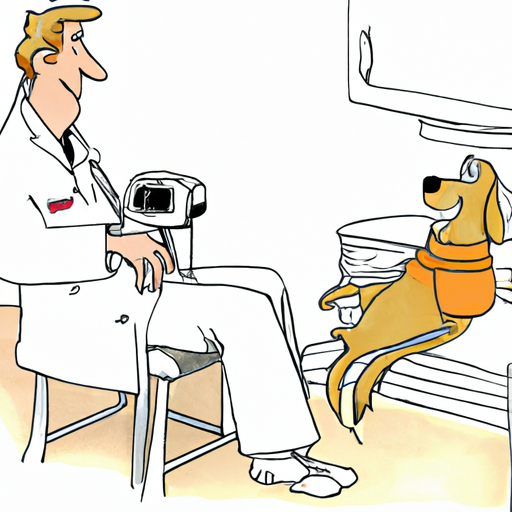“`markdown
How to Take a Dog’s Blood Pressure
As a caregiver, understanding your dog’s health is of utmost importance. One crucial aspect of this is keeping tabs on their blood pressure. High or low blood pressure can be indicative of underlying health issues that need to be addressed promptly.
1. Understanding the Importance of Monitoring Your Dog’s Blood Pressure
When it comes to your dog’s health, their blood pressure might not be the first thing that comes to mind. But, just like humans, dogs can also suffer from hypertension (high blood pressure) or hypotension (low blood pressure).
- High blood pressure can lead to damage in organs such as the heart, kidneys, and eyes.
- Low blood pressure might be a sign of underlying health issues like heart disease or shock.
By regularly monitoring your dog’s blood pressure, you can catch these issues early and get your furry friend the help they need.
2. Gathering the Necessary Equipment
To measure your dog’s blood pressure, you’ll need a few pieces of equipment:
| Equipment | Purpose |
|---|---|
| Pet-specific blood pressure monitor | To take accurate readings |
| Cuff | To wrap around your dog’s leg or tail |
| Dog treats | To keep your dog calm and reward them afterwards |
Most of these items can be purchased at a pet store or online.
3. Preparing Your Dog for the Measurement
Before you begin, it’s essential to ensure your dog is calm and comfortable. This may involve:
- Setting up a quiet, relaxing environment.
- Gently petting your dog or speaking to them softly.
- Rewarding them with treats to create a positive association with the blood pressure check.
4. Taking the Blood Pressure Reading
Follow these steps to take your dog’s blood pressure:
- Wrap the cuff around your dog’s leg or tail, making sure it’s not too tight.
- Turn on the monitor and wait for it to take a reading.
- Note down the reading and remove the equipment.
If you notice any abnormalities, consult with your vet as soon as possible.
5. Understanding the Blood Pressure Reading
Your vet can provide you with a range of normal blood pressure for your dog. However, a general guideline is:
- Systolic pressure: 120-160 mmHg
- Diastolic pressure: 60-100 mmHg
Any readings outside of these ranges could indicate a problem and should be discussed with your vet.
FAQ
Q: How often should I check my dog’s blood pressure?
A: Depending on your dog’s health, your vet might recommend checking it daily, weekly, or monthly.
Q: Can I use a human blood pressure monitor on my dog?
A: No, human monitors are not calibrated for dogs. It’s best to use a pet-specific monitor.
Q: What should I do if my dog’s blood pressure is abnormal?
A: Contact your vet immediately. They can provide further guidance and set up an appointment if necessary.
“`



